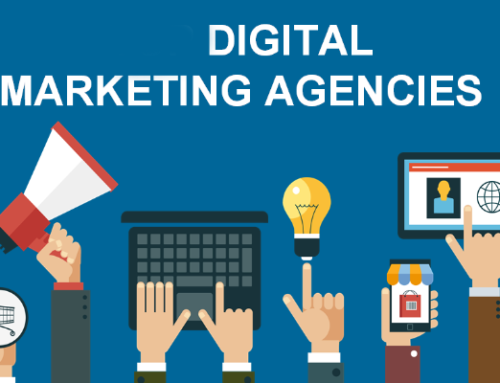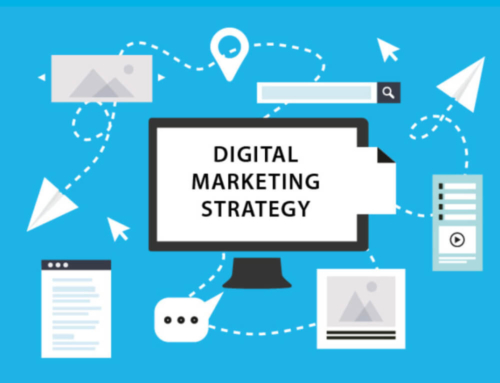There are so many digital marketing strategies, and sometimes it can be overwhelming when you’re trying to decide which one to prioritize. Marketers looking for the ultimate digital marketing strategy need to have a clear understanding of their business, product, and demographics before choosing a digital marketing strategy that will be effective for their needs.
LIMITED TIME OFFER – GET A FREE 30-MINUTE STRATEGY SESSION
In new research, we interviewed 200+ global marketing leaders to find out what they thought the future held for digital marketing, and interestingly enough, digital strategy and planning ranked one of the top four skills they consider ‘extremely important’.
DOWNLOAD THE SURGE DIGITAL ‘5 Ways to Grow Your Business in 90 Days’ EBOOK
When it comes to your digital marketing campaigns, you don’t want to waste your time by choosing the wrong one, and you need to stay on top of your lead generation activities as well.
Here’s a comprehensive how-to guide that can help you drive customer engagement, raise brand awareness, and generate leads in 2019 and beyond.
THE MOST EFFECTIVE STRATEGIES
According to Smart Insights, the most effective strategy in 2018 was social media marketing, followed by content marketing, and the least was data management, with SEO being somewhere in the middle of it all.
While this is by no means cut and dry (some strategies will work better than others, depending on a number of variables), it does offer an interesting glimpse as to the most probable methods of lead generation.
Email and video each constantly stand out as effective ways to market almost any product through any industry, though in the chart listed with Smart Insights, it’s not as powerful as content or social media marketing.
What matters more than the type of marketing you are doing is whether or not your all-around approach is well-matched with your brand and message. To that end, the following are some considerations for creating an effective campaign in the context of your business.
STAY NIMBLE
Here’s the thing about digital marketing: it’s a bit of a trial and error process. So while you absolutely want to make a plan, you also have to be flexible with:
- Shifting SEO patterns
- Upcoming trends
- Your content calendar and timeline
- One or two social channels only (the ones that perform best)
- Which KPIs to focus on
- When to get progress reports, where you can discuss and regroup
A successful strategy will always need some tweaking and as such needs careful and continual monitoring and adjusting. If you’re working alone or in a small company, don’t be afraid to hire outside consultants to help you dig through your metrics and redefine goals if something doesn’t seem to be working the way it was planned.
DEEPLY UNDERSTAND YOUR CUSTOMER
No digital marketing strategy will be effective if you don’t first have a clear understanding of who buys your product and why they buy it. Where and how they buy it may or may not be relevant as well. Dig deep and explore various demographics in order to not only understand what they want to buy but also understand what they’re concerned with culturally, socially, and politically.
An example of customer awareness is Airbnb’s success with #weaccept, initially a Super Bowl ad that came out after President Trump’s travel ban. It had 5 million views in a month on YouTube, plus the well-received hashtag gained plenty of celebrity attention. That is not to say that you should take the risk of being political, but being culturally sensitive, especially when on-brand, is never a bad thing.
Mercedes’ #MBPhotoPa ss campaign is just one of many examples of campaigns that used a combination of technology, authenticity, and a simple message with an influencer partnership to capture the attention of animal- and adventure-lovers. This video was part of the campaign. It offers a 360-degree VR view of a canine Instagram star, Loki, and his owner Kelly Lund driving through snowy mountains in a Mercedes. The campaign featured a variety of real people having real adventures, which made it go viral.
Form a robust profile of your audience and inform your tactics by:
- Defining the channels that fit key demographics best
- Speaking their language, considering that “language” isn’t just words
- Understanding their pain points and how to switch on emotions
- Creating useful personas for each of your demographics to help you visualize their lives and predict buying patterns
- Being culturally aware
- Considering unique partnerships such as with influencers
- Focusing on action-oriented experiences and results rather than the product itself
- Using well-developed automation tools for highly detailed segmentation and targeting
FOCUS ON THE END RESULT
In marketing and product development, there is often so much emphasis placed on the product and the “numbers” surrounding it (profits) that sometimes people lose sight of the need that the product fulfils.
What truly matters is who you are marketing to, and why. You need to understand their pain points in order to get what they’re ultimately doing with your product. In other words, when you demonstrate the post-buying moments, they’ll then remember why they need it in the first place.
USE CONTENT FOR LEAD GENERATION
There are many ways of generating leads, but one tried and tested method is by providing valuable written content and distributing it appropriately. When you tie your blogs and articles to a specific offer via a landing page, you boost your conversion potential. According to Entrepreneur, bloggers are 13 times more likely to have a positive ROI, and companies have the same type of results.
GO LIVE AND USE AUDIO
When you take the lead on organizing and hosting in-person events, including live webinars that can also be distributed to valued contacts later or used as a special offer, you’re establishing authority and connectivity in the field. And the best part is that these events don’t even have to be formal. If you know that a few peers in your field are in the same city as you, you can plan a meetup night to connect.
Anything that you record in high-quality or that you do to facilitate education and connection will stick in people’s minds.
FOCUS ON MOBILE
According to Statistica, some 4.78 billion people worldwide will be connected to mobile phones as of 2020. And Convince & Convert claims that 40% of shoppers consult at least one social or search channel as they shop and that 4 out of 5 shoppers use their smartphones as part of their regular consuming habits.
If you think about it, this is truly becoming the norm. Whether you’re looking up reviews for a popular video game, checking restaurant ratings on Yelp or simply seeing if your local store has the right item in stock, you’re using mobile a lot for basic consumer needs.
With that in mind, here are a few ways you can ensure that your mobile marketing strategy stays on track:
- Optimize your website for both desktops and smartphones
- Use clickable phone numbers, addresses, and CTAs (calls to action)
- Make sure your contact details are connected to a map app
- Ensure a quickly loading website
- Always review ads for social media or other types of mobile-friendly platforms
USE CONTENT TO SHOW AUTHORITY & AUTHENTICITY
Don’t just use social to “post” – you want to share your own company’s values and mission no matter what channel or method you’re using.
A few tips on this:
- Get personal with live videos. Provide interactive elements and behind-the-scenes looks at the company or product whenever possible.
- Offer ongoing learning and education as a part of your brand’s mission, whether it’s about the brand itself or about a cause it’s close to.
- Use podcasting and written interviews to generate content on a conversational level and ensure that you have SEO-optimized, authoritative content out there on the web.
- Post your live and other videos to your website and even embed them in ads. Video is one of the top-converters, and it doesn’t require a high budget to use well.
And don’t forget the emotion-based storylines. Stories that appeal to the real people behind your company can be beneficial. They make your company appear more personable and approachable, building trust. Consumers are looking for more meaning behind their purchasing habits. Give them a good reason to continue choosing you.
REVIEW AND REFINE
When you first develop your marketing plan, it’s imperative that you include key performance indicators (KPIs) that fit with crucial business goals. You need to have a plan in place in order to understand your goals and objectives. Then, once you understand these, you can monitor the metrics giving you information about the KPIs that matter.
So, you’ll need to:
- Step away from vanity metrics – that is, don’t pay attention to the numbers that aren’t absolutely crucial parts of your long-term success
- Use KPIs to measure success, but don’t have them set in stone (i.e., be flexible)
- Set up continuous intervals for analyzing, understanding, measuring, and then reporting
- Understand how to isolate critical metrics if it looks like something is not working
THE BOTTOM LINE
The bottom line with any digital marketing campaign or tactic is to stay aligned with your core purpose, not just your product. Focus on benefits, address customer’s real needs, and understand what makes them tick. As well, stay on top of which social trends are affecting various demographics. Remember that it’s really your job to “follow” the customer and not the other way around.
By: Carla Rivera
Source: Digital Marketing Institute










